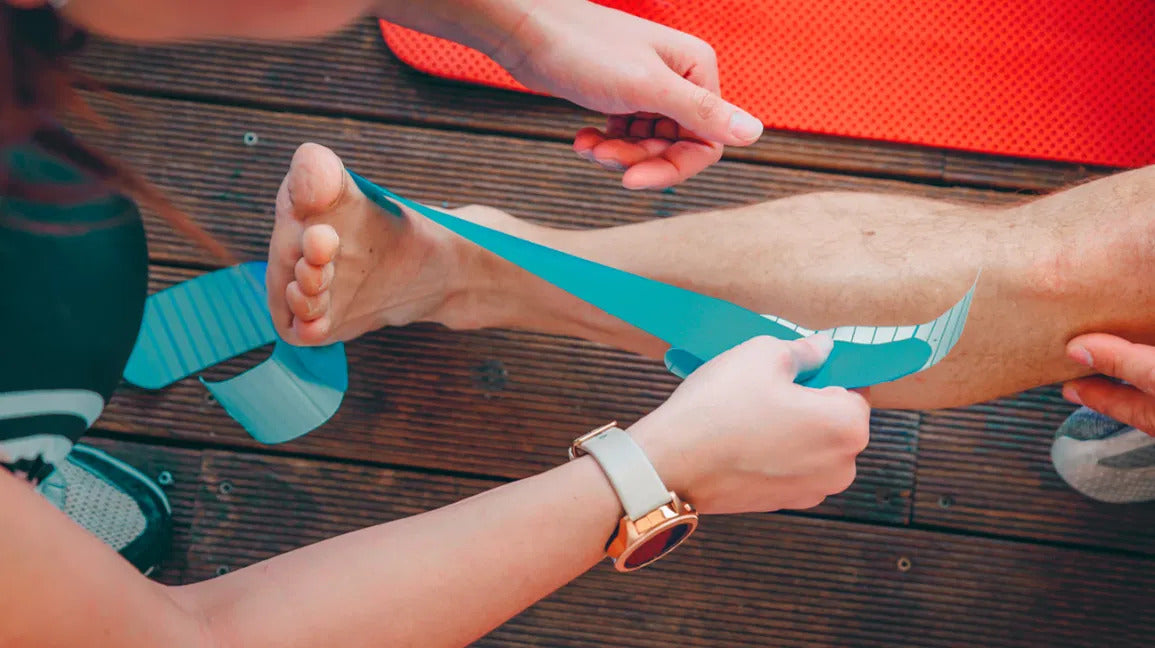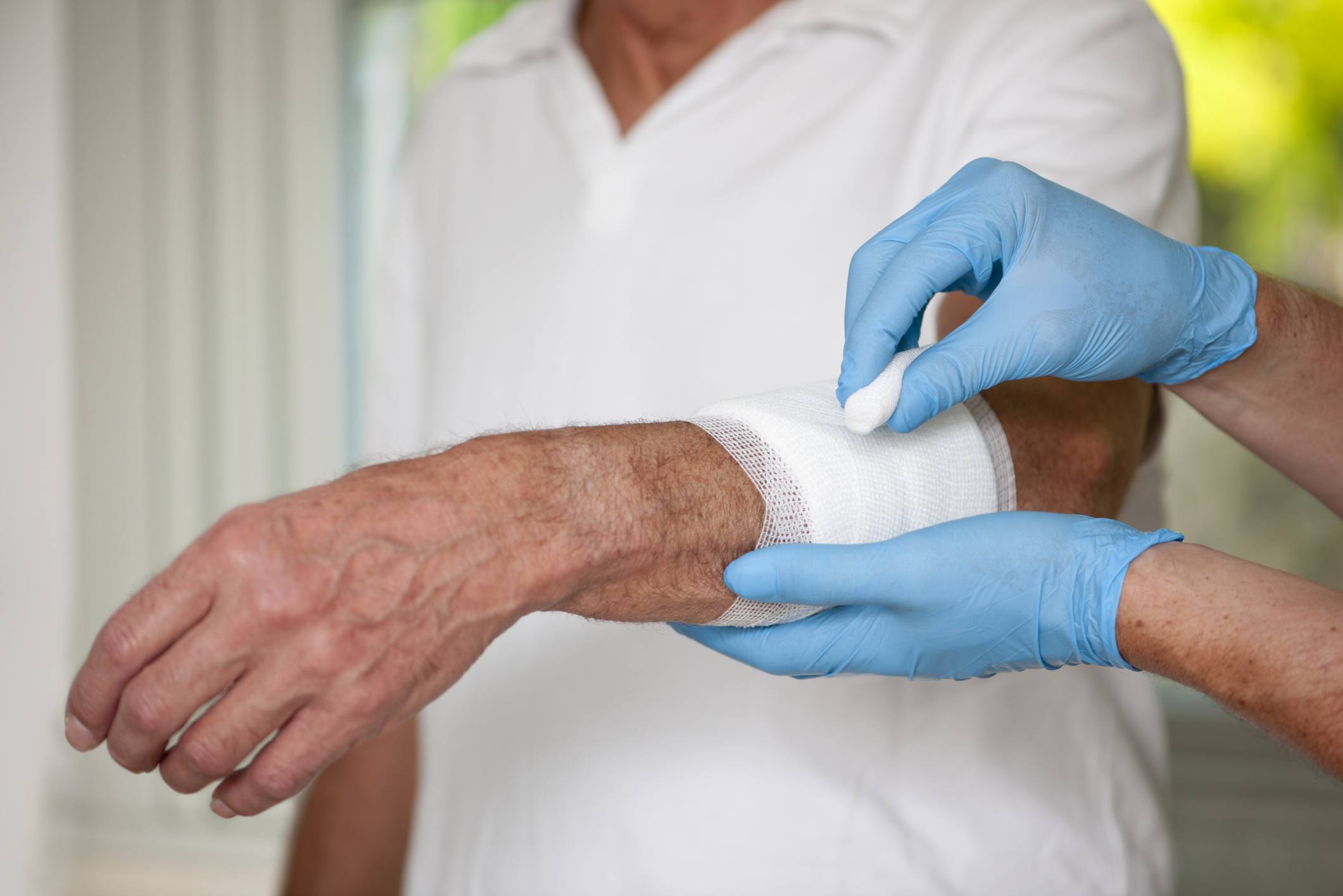
Injuries are a part of daily life, especially if life involves high-intensity sports. Injuries are still possible even when a person's life does not include jumping over boxes or trying to flip over obstacles. A simple twisting of an ankle, a sprain of the wrist, tripping, and crashing onto the knee can all produce injuries that make life slightly more complicated. Fortunately, some tools can help heal quicker. The question is how does Kinesio tape heal injuries?
A person's lifestyle plays into how prone that individual is to injury. Athletes are clearly more prone to physical injury due to the nature of their lifestyles. The life of an athlete is always a combination of sweat, blood, tears, tiger balm, ice packs, and medical tape due to the constant effort placed into their discipline. In the 1970s, a new tape was created that offered an alternative to treatment beyond simple immobilization. Kinesiology Tape or K-tape, was made to keep an athlete in training in mind.
The ultimate goal of all the tools involved in helping people mend their injuries is to help the athlete return to his activity as soon as possible. One of the most stressful moments for athletes in team sports is to have to be on the sideline while their team members play without them. Extended time just watching can cause stress to the athletes' mindset. There is also a stigma placed on professional athletes that the players should ignore the pain and somehow manage to pull a win despite the anguish the person might be going through.
How Does Kinesiology Tape Heals Injuries: Where Does Kinesio Tape Come From?
During the 1970s, Japanese chiropractor Dr. Kenzo Kase had an idea based on the needs of one of his patients. The young man was training for an Olympic event, and his injury would mean he would have to have his limb immobilized so it could heal properly. The young man felt the injury was not bad enough that it needed to be immobilized, but it was severe enough that if left untreated could result in a worse sprain or injury to the articulation.
Before the creation of K-tape, medical tape was used on injuries; unfortunately, the medical tape was thick and had very little give, so even a little placed on the injury would hinder technique. Stubborn athletes that would refuse to rest and keep training would place their health in peril by using their injured bodies in high-intensity activity.
Dr. Kenzo Kase developed a blend of cotton and elastic polymer woven into a breathable tape. The elastic properties of the tape would allow athletes to continue training while providing support to their activities, providing a level of stability. The tape would feature a strong adhesive that could stick to the skin for up to five days without pealing or losing strength due to sweat.
Kase also came up with taping techniques for each joint and articulation. This taping method allowed for freedom of movement since it saw strips of tape placed one over the other with the express intention of permitting movement, unlike traditional medical tape, which was placed over an injury and worked more like a wrapping effect that would immobilize and not permit movement for training.
The tape was used primarily by high-level athletes but became a mainstream feature thanks to its prominent use during the 2012 London Olympics. Several high-level athletes were seen sporting the colorful tape strips across their bodies, explicitly targeting muscle groups. They would explain that the tape would help them perform at their peak level thanks to the additional support provided to them by the sturdy tape. The tape both prevented injury and promoted healing, and allowed slightly injured Olympic athletes to engage in their sport.
Quick Facts of Kinesiology Sports Tape
- Created in Japan by Dr. Kenzo Kase.
- Made as an alternative to traditional medical tape.
- The combination of material cotton and elastics allows for support and freedom of movement.
- Various taping techniques made the movement possible for athletes to continue training.
- The tape was a prominent feature of the 2012 London Olympics.
How Does Kinesio Tape Heals Injuries: Compression and Support
Kinesio tape works on injury mainly by compression. The applied tape provides constant pressure over the injury, but the healing process can vary depending on the type of injury. A sprained ankle is treated by placing the tape, and the tape then provides support to the ankle and, at the same time, creates a small gap along the articulation for blood to flow. The increased blood flow brings more excellent oxygen to the joint, allowing the injury to heal faster.
One of the first body responses to injury is to build up fluid and create swelling around the injury. K-tape provides enough pressure to keep the swelling at bay, allowing the flow of blood to reach the injury and thus heal rapidly. Swelling tends to constrict blood vessels and can slow down the healing process.
Kinesio tape provides support; this feature permits athletes to continue their training while still performing proper technique. This is key to long and healthy joints. In many cases, a slight twist or a minor tweak in how someone performs a push or a pull can mean the difference between success and injury. Thanks to the support provided by the tape, the athlete can participate with confidence that they will not re-injure themselves due to bad technique.
A sprained muscle can always benefit from K-taping; a section of the tape works as an anchor while the rest presses and compresses. This helps the ligament (which connects the muscle to the bone.) heal. While several levels of injury can occur to the body, k-tape can offer help at almost all stages except a complete muscle tear.
How Does Kinesio Tape Heals Injuries: Scar Tissue
While not designed to treat open wounds, K-tape can help the scaring process. It is common for the body to produce too much collagen while healing. This causes the scars o to grow or thicken beyond the initial wound site. The application of K-tape helps keep the scar compressed and small. The tape's application over the tissue protects the affected area; the stretchy tape helps keep inflammation at bay and increases blood flow.
List of Scar Types:
- Fine Line Scar: A small line left over from surgery or a small cut
- Keloid scars: here, the scar continues to grow as the body produces too much collagen and can continue to grow even after the wound has healed.
- Hypertonic Scars: These are very similar to Keloid but do not grow outside the injury and finally become thicker due to the extra collagen.
- Pitted scars: These are leftovers from acne or chicken pox and should be treated by a dermatologist.
- Contracture Scar: scars produced by burns; the scaring process can affect muscles and nerves depending on the burn.
The R.I.C.E Method
The use of the R.I.C.E method can help decrease healing time. It has been used in modern sports medicine for a long time. Rest, ice, compression, and elevation have been the gold standard for healing injuries.
Rest: follow the doctor's orders. Sometimes the fastest way to get back on the field is simply to stay off it for the recommended amount of time. Unless instructed by the doctor, it is best to allow the body to heal.
Ice: The cold temperature can help with swelling.
Compression: Pressure placed on the body's injuries to allow blood flow and fight off the accumulation of fluids that can cause swelling.
Elevation. Raising the limbs can decrease blood flow and fluids to the injury.
How Does Kinesio Tape Heals Injuries: How to Apply the Tape
Once the injury is assessed, the proper taping method is selected. The strips are cut and applied over the injury. The adhesive will activate with heat, and the individual can simply rub the palm of their hand over the tape. The warmth will cause the glue to stick to the skin, and the adhesive is designed to last up to five days.
It is recommended not to remove the tape without preparing the area first. Pulling on the tape will rip out body hair, which can be painful. First, wash the area with warm water, then lather up the tape with soap. The warm water and the soap should loosen up the adhesive allowing for smooth removal. Baby oil is always an option to help remove the tape. Soak the tape in the baby oil (all brands works well) and wait for 30 minutes. The removal should be pretty straightforward.
Removing K-Tape Quick Guide
- Prepare a bath or shower with warm water.
- Lather up the area with soap.
- Remove the tape following the way the hair grows on the body to avoid painful removal.
- If using baby oil, soak the tape in baby oil
- Wait for 30 minutes
- Remove the tape the same way the hair grows on the body.



